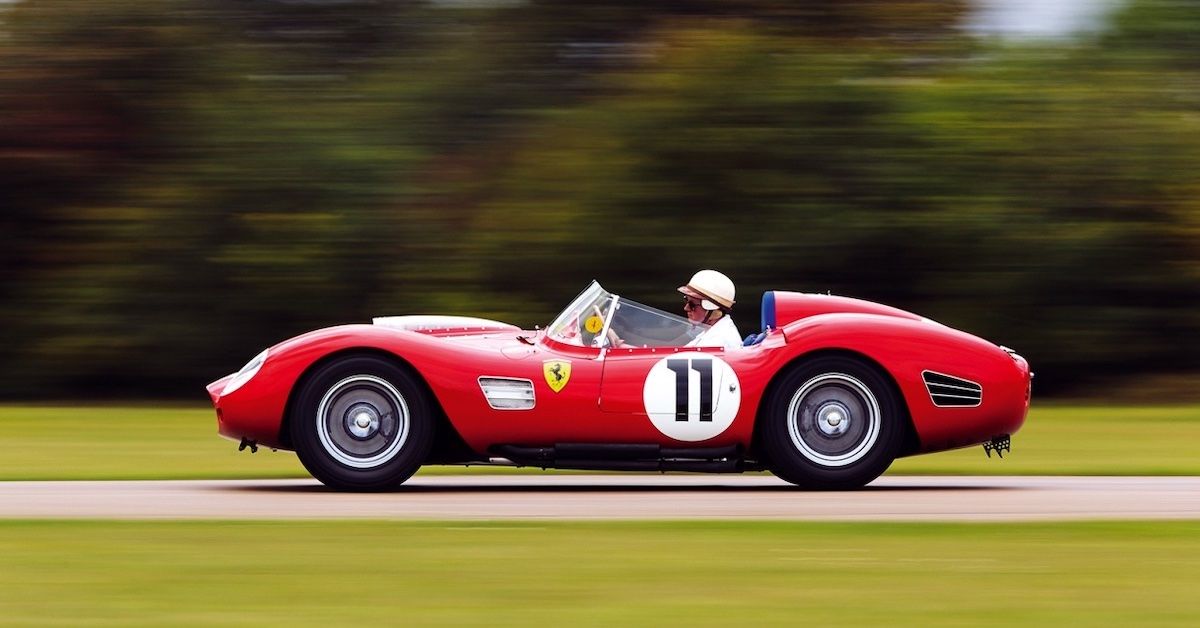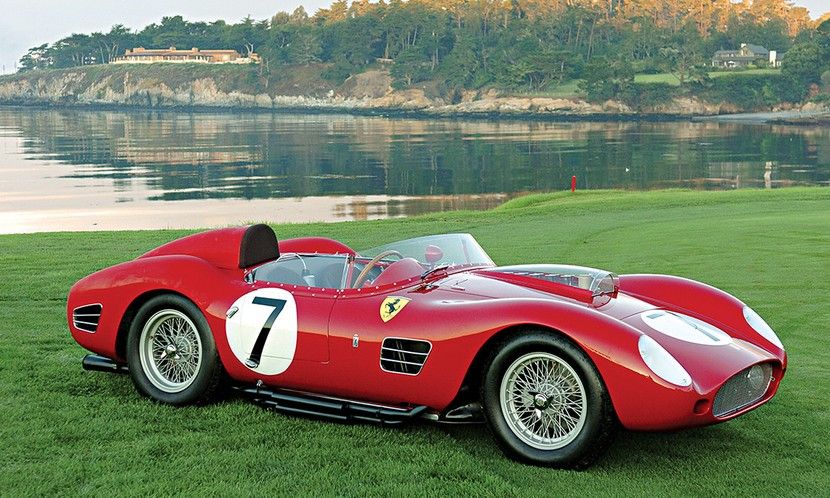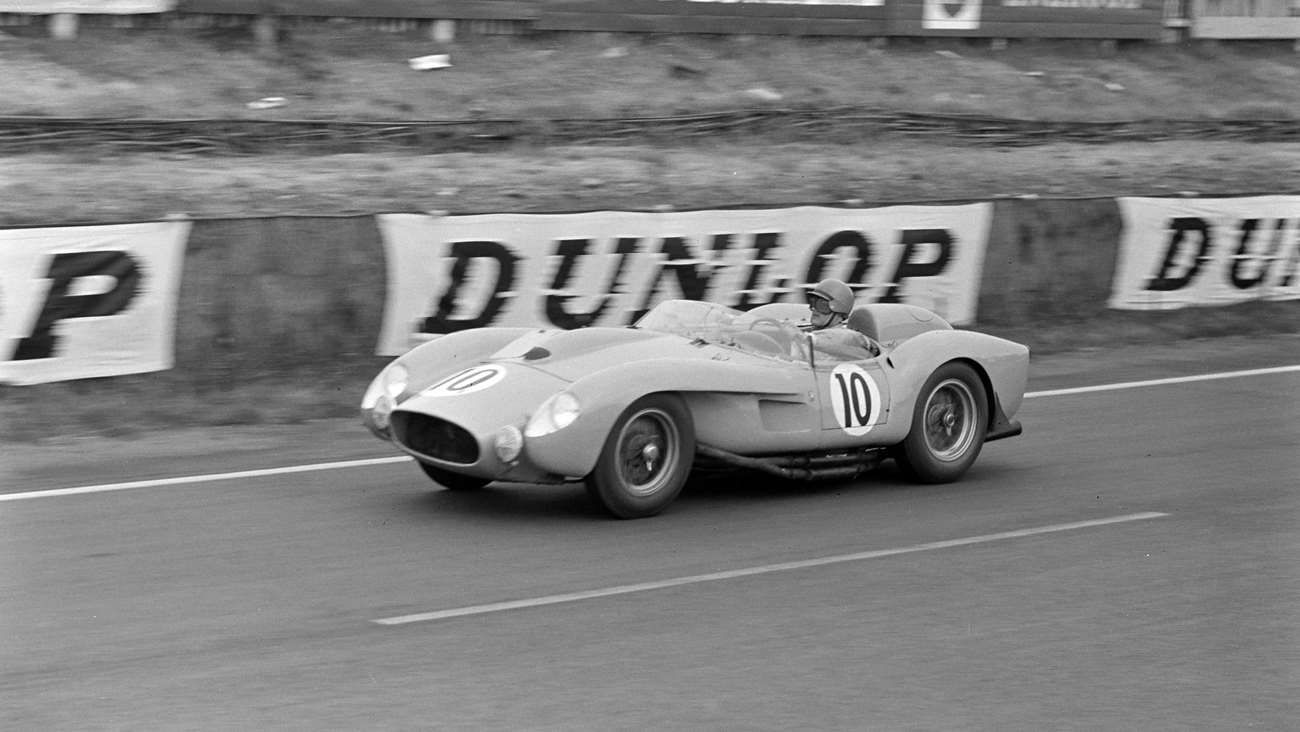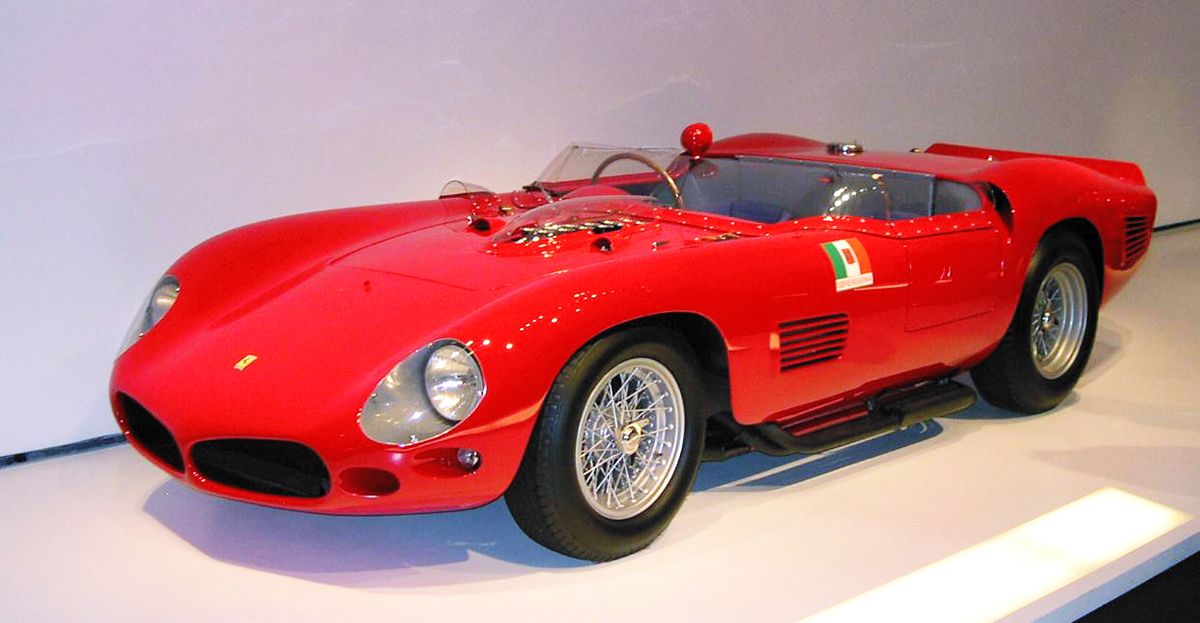When Ferrari is the topic of conversation, the first thing that comes to mind is the wide and historic range of supercars that have continuously emerged from the Italian carmaker’s factories for decades upon decades. What is often overlooked, however, is the extremely successful and revolutionary racing history Ferrari has to its name, with a timeline that boasts countless titles and truly incredible vehicles.
In the late fifties, The World Sportscar Championship was as fierce and competitive as ever, and Ferrari battled hard in an attempt to win its fourth title in a span of just 5 years. In 1957, however, tournament organizer FIA introduced a new regulation that set the max engine size for the upcoming season to 3 liters due to the alarming number of accidents that had been occurring.
In response to the new rules, Ferrari began to develop their next racecar, based on a mix between the already competent 500 TR and the 290 MM, which was led by chief designer Carlo Chiti. The result was the Ferrari 250 Testa Rossa, which would go on to win several titles on its way to becoming one of the race team’s most iconic and celebrated race cars ever. Here’s a look into its truly fascinating and fruitful history.
The 1957 Ferrari 250 Testa Rossa’s Specs
To power the 250 TR, Chiti and his team opted for the 3.0 liter V12 Colombo that Ferrari had already mated to the production 250 GT, though it was heavily modified in order to compete at the highest possible level. These modifications included a total of 6 carburetors instead of the 250 GTs 3, as well as an overall build that made the engine more durable and suited to the racing needs that would be required of it. The engine would ultimately go down as one of the most reliable and consistent racing engines of all time.
The 3.0-liter V12 - which was called the Tipo 128, was able to produce 300 horsepower at 7200 rpm on its way to a top speed of 169 mph. The best part about the engine was the fact that it presented a power/liter ratio of 100 hp per liter, which was pretty much as good as it could get at the time and was a testament to Ferrari’s engineering prestige.
A Decorated History: The 250 Testa Rossa’s Incredible 4-Year Run
Ferrari’s 250 Testa Rossa would go on to compete in the World Sportscar Championship for four consecutive years, during which the vehicle won 10 independent races including: Three 24 Hours of Le Mans (1958, 1960, 1961), three 12 Hours of Sebring (1958, 1959, 1961), two 1000 km Buenos Aires (1958 and 1960), the Targa Florio in 1958 and the 4 Hours of Pescara in 1961. These wins allowed Ferrari’s race team to win the World Sportscar Championship in 1958, 1960 and 1961. The 1959 Championship was won by Aston Martin’s race team with the highly competent DBR1.
Along with the amazing racing capabilities of the 250 Testa Rossa, Ferrari also had an amazing team of drivers during the TRs brief racing span, including Phill Hill, Luigi Musso, Olivier Gendebien and Wolfgang von Trips.
Ferrari Upgraded The 250 Testa Rossa For Each New Season
As is the norm with race teams and their cars, the 250 TR underwent numerous revisions and upgrades during its lifetime as Ferrari’s race car. For 1959, Pininfarina oversaw a redesign of the 250s body, and the panels of the new exterior were fabricated by Fantuzzi. Additionally, the vehicle’s drum brakes were replaced by a Dunlop Disc braking system, and the 4-speed manual transmission was upgraded to a newer 5-speed gearbox.
After losing the World Championship in 1959, Ferrari did everything it could think of to perfect the Testa Rossa. They introduced a dry sump lubrication system that allowed the vehicle’s center of gravity to be lowered, resulting in improved handling and better aerodynamics. Rear independent suspension was also added for 1960, and the vehicle’s windshield had to be heightened in order to comply with new regulations, though this particular change resulted in lesser performance due to more drag caused by the windshield's larger surface.
Finally, for 1961, Ferrari decided to completely redesign the 250 Testa Rossa’s body in order to accommodate the larger windshield without increasing drag. The redesign, built once again by Fantuzzi, featured a new sloping windshield that wrapped around the vehicle’s cockpit for increased aerodynamics, as well as a new front air inlet that was split in two separate openings for improved air penetration. Lastly, a deflector panel was placed high up in the 250s rear in order to prevent exhaust fumes from reaching the cockpit, but this inadvertently improved high-speed stability and maneuverability of the vehicle as well.
1962 marked the end of the 3.0 liter 250 Testa Rossa, closing out a marvelous 4-year chapter that would forever be remembered in the racing world as one of Ferrari’s most successful runs of domination. The vehicle itself instantly became an icon, and with only 33 units ever built, it is extremely expensive and highly desirable. In 2014, one was sold for $39 million dollars, which is testament enough to the story and importance behind the vehicle.




